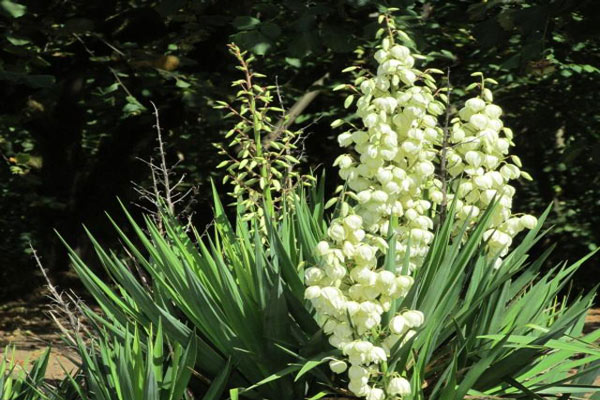Adams Needle (Yucca Filamentosa) Plant Grow & Care Guide
Written by Iris
Dec 15 2021
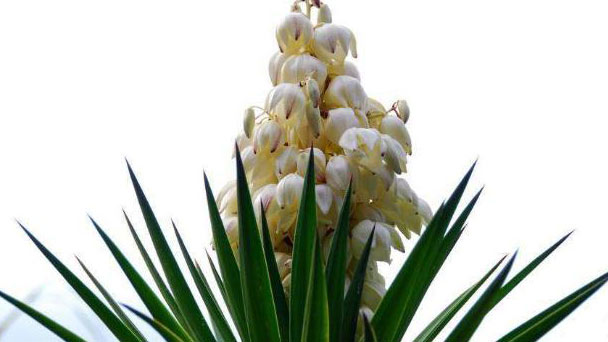
Adams Needle Plant (Yucca filamentosa) is a low evergreen shrub with hard outward spreading leaves. Adams Needle Plant is a slow-growing native evergreen shrub that will remain relatively small. From May to June, a large white spike appears in the center of the plant. With its versatility in planting and the beautiful nature of the plant, Adams Needle Plant is the perfect bush for home landscaping.
If you have an outdoor space like a patio, balcony, backyard, or front porch, it's a good idea to move your yucca outside for the summer. These plants can withstand a wide range of temperatures—anywhere from just above freezing to hot, dry conditions around 90 degrees—so they can flourish in most indoor and outdoor spaces. If it's been outside for the season, check for any mites or infestations on the plant before bringing it back inside.
Plant your adams needle Plant in well-drained potting soil, such as a succulent or cactus mix. You can also make your own blend by combining regular potting mix with equal parts coarse sand and perlite to help with drainage. Using a terra-cotta pot with drainage holes is helpful to keep the moisture levels even, as this porous material soaks up excess water.
Moderate humidity isn't necessary for this plant, but it does encourage healthy growth. While you don't need to mist its leaves, it's best to keep your yucca at least a few feet away from an air conditioner during the summer months to keep it from drying out.
For more Adams Needle Plant native habits, please click Adams Needle Plant (Yucca Filamentosa) Profile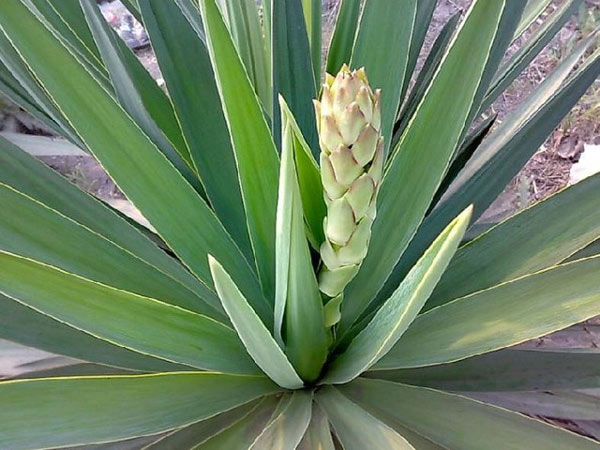
The following are important:
The plant can be easily grown in large containers. Here the requirements for the substrate are similar to those in the garden. If you don’t want to bother to mix conventional potting soil with peat, sand and light clay, you should use rhododendron soil. This material meets all the needs of the Yucca.
This plant grows best when watered every one to two weeks during the spring and summer growing seasons. This time of year, you may even find white flowers blooming within the leaves. Cut back to watering about every three weeks in the fall and winter.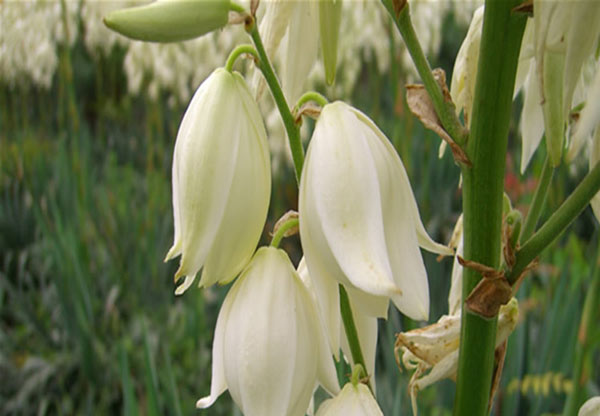
The plant prepares itself for the cold season shortly after it has faded. Nutrients in any form can significantly weaken the plant at this stage. Alternatively, you can water with pond water or diluted plant swill (e.g. nettle). This contains the minerals necessary for the growth and resistance of the plants. With plants in the bucket, it is sufficient to repot them regularly.
Cut brown or damage fronds. Mature Adams Needle Plant plants may also have a bloom stock to cut back. Garden shears work better than pruners for yucca foliage due to the fibrous texture. Fronds that have been brown for awhile may just pull out. Each spring there will be new brown fronds to trim away.
Start at ground level and cut all of the brown foliage. Trim them as close to the trunk as possible for aesthetic value.
Yucca Filamentosa also needs insecticide regularly to keep slugs and snails at bay as these can damage the plant.
Adam Needle is also prone to mites. This is characterized by speckling on the leaves or the appearance of gray webs.
This can be prevented with miticides, pruning, and soaping with special insecticidal soap.
Fungal diseases can occur in the form of spotted leaves with reddish-orange marks. These should be removed as soon as possible to prevent the disease from spreading to other leaves.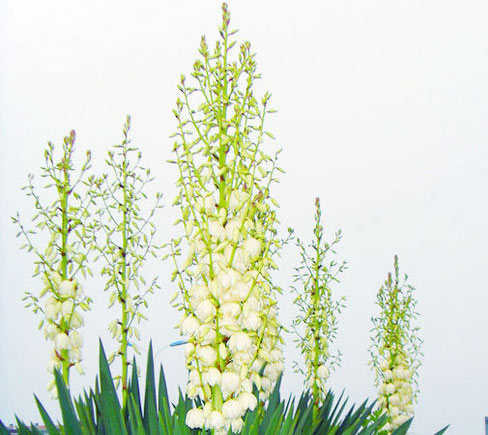
Securing an Adams Needle Plant before winter involves tying the leaves and covering them with a cloth that protects the plant against frost.
For the cover you can use cardboard, spruce branches or straw. Secured this way, an Adams Needle Plant can survive the cold season without the risk of developing diseases.
You can uncover your Adams Needle Plant at the same time when new plants are put in the ground. The best period for that is between March and April, or earlier, if the temperatures are high enough.
Where to Grow Adams Needle Plant (Yucca filamentosa)How to Propagate Adams Needle Plant (Yucca Filamentosa)Adams Needle Plant Propagation from SeedsAdams Needle Plant Propagation from Stem CuttingsAdams Needle Plant Propagation with OffsetsHow to Care for Adams Needle Plant (Yucca filamentosa)Adams Needle Plant Lighting RequirementsAdams Needle Plant Soil CareAdams Needle Plant WateringAdams Needle Plant Temperature & Humidity CareAdams Needle Plant FertilizerAdams Needle Plant PruningAdams Needle Plant Pests & Diseases CareVarieties of Adams Needle Plant (Yucca Filamentosa)Adams Needle Plant Care FAQHow to overwinter an Adams Needle Plant plant?Can you grow an Adams Needle Plant indoors?
Where to Grow Adams Needle Plant (Yucca filamentosa)
Adams Needle Plant (Yucca filamentosa) grows best in bright, indirect light, but they can also thrive in full sun. That makes your yucca a great candidate for south- or west-facing windows with direct sunlight that would be too much for other plants.If you have an outdoor space like a patio, balcony, backyard, or front porch, it's a good idea to move your yucca outside for the summer. These plants can withstand a wide range of temperatures—anywhere from just above freezing to hot, dry conditions around 90 degrees—so they can flourish in most indoor and outdoor spaces. If it's been outside for the season, check for any mites or infestations on the plant before bringing it back inside.
Plant your adams needle Plant in well-drained potting soil, such as a succulent or cactus mix. You can also make your own blend by combining regular potting mix with equal parts coarse sand and perlite to help with drainage. Using a terra-cotta pot with drainage holes is helpful to keep the moisture levels even, as this porous material soaks up excess water.
Moderate humidity isn't necessary for this plant, but it does encourage healthy growth. While you don't need to mist its leaves, it's best to keep your yucca at least a few feet away from an air conditioner during the summer months to keep it from drying out.
For more Adams Needle Plant native habits, please click Adams Needle Plant (Yucca Filamentosa) Profile
How to Propagate Adams Needle Plant (Yucca Filamentosa)
Adams Needle Plant Propagation from Seeds
Adams Needle Plant sowing seeds does not work reliably in some latitudes. To successfully pollinate the bell-shaped flowers, a special type of moth is required, which is only available in North America. This problem could be solved by manual pollination by humans. However, there are other, more successful methods of propagating the Adams needle plant.Adams Needle Plant Propagation from Stem Cuttings
When your Adams Needle Plant (Yucca filamentosa) has reached its mature size, you'll likely start finding baby plants (or offsets) beginning to grow. You can propagate your plant to create new growth by separating offsets or cutting stems, which both require a similar method. It's best to take stem cuttings in the spring when the plant is actively growing, but offsets can be propagated year-round.- Step 1: Identify the yucca offset or healthy stem on the mother plant that you'd like to propagate. If it's possible to wait until the offset has roots, it'll establish more quickly (but any offset with at least a quarter-inch of stem will grow into a new plant).
- Step 2: Cut off the offset, including any roots, or cut a portion of stem that's at least three inches long. Remove the bottom few inches of leaves from the stem cutting.
- Step 3: Place both offsets or stem cuttings in a shady, dry place for a few days. This will allow the cut sections to callus as they grow stronger before planting.
- Step 4: Fill the pot with potting mix. Plant offsets or cuttings in the soil, ensuring at least part of the stems are submerged in the fresh mix.
- Step 5: Put the cuttings in a cool place with indirect light. Water thoroughly when first planted, and then avoid watering until the soil becomes completely dry.
- Step 6: Water sparingly (or about every one to two weeks). Water only when the top inch of soil is dry, as too much moisture can cause root rot. Keep new cuttings away from direct sunlight while waiting for a strong root system to grow. At that point, they can be transferred to new pots and cared for as usual.
Adams Needle Plant Propagation with Offsets
Adam’s Needle propagates from offsets. To be able to propagate from the mother plant, you might wait several years for the main plant to produce an offset. To start this process, use a sharp knife and remove an offset from the main plant. When you remove the offset, clean the extra soil from it. Before replanting, wait for a few days to allow it to callous. Use well-draining soil for your new succulent plant. Don’t forget to water when the soil dries out.
How to Care for Adams Needle Plant (Yucca filamentosa)
Adams Needle Plant Lighting Requirements
Adams Needle Plant (Yucca filamentosa) grows best in full sun but will tolerate a little shade.Adams Needle Plant Soil Care
With the substrate for Adam’s needle plant, less is more. The plant prefers barren soils that are well-drained and dry. A loamy clay soil based on humus, mixed with plenty of sand and gravel, is a suitable combination. Stony and chalky corners in the garden anyway, where barely anything wants to thrive, are also ideal for the Yucca Filamentosa.The following are important:
- loose soil conditions
- moderate nutrient content
- no tendency to waterlogging or compression
- good drainage
- pH neutral to basic, can be achieved by liming if necessary
The plant can be easily grown in large containers. Here the requirements for the substrate are similar to those in the garden. If you don’t want to bother to mix conventional potting soil with peat, sand and light clay, you should use rhododendron soil. This material meets all the needs of the Yucca.
Read More:
12 Wonderful Evergreen Shrubs for Your Garden
Adams Needle Plant Watering
Since they're native to the desert, Adams Needle Plants are very tolerant of drought-like conditions. These easy-to-grow plants can withstand mild neglect, even in a dry climate. They're great houseplants if you travel often, but, like most plants, yuccas thrive with more care.This plant grows best when watered every one to two weeks during the spring and summer growing seasons. This time of year, you may even find white flowers blooming within the leaves. Cut back to watering about every three weeks in the fall and winter.
Adams Needle Plant Temperature & Humidity Care
Although native to the southeastern U.S., this hardy succulent has naturalized farther north. You can plant yucca filamentosa in USDA hardiness zones 5 to 10, where it readily adapts to all climate variations within those zones. This plant usually readily survives temperatures down to 5 degrees Fahrenheit, but it will survive temps of -10 to -20 degrees Fahrenheit if covered with mulch over winter.
Adams Needle Plant Fertilizer
Common Adams Needle Plant is one of the light feeding plants. These plants need a minimum of nutrients and should never be over-fertilized.The plant prepares itself for the cold season shortly after it has faded. Nutrients in any form can significantly weaken the plant at this stage. Alternatively, you can water with pond water or diluted plant swill (e.g. nettle). This contains the minerals necessary for the growth and resistance of the plants. With plants in the bucket, it is sufficient to repot them regularly.
Adams Needle Plant Pruning
To improve the appearance of the type of yucca known as Adam's Needle (Yucca filamentosa), mechanically remove the brown fronds each year. Clear debris from around your yucca. You will need a clean work area and a clear view of the trunk. It is also important to see where the young plants are emerging. Do not damage the new plants while pruning the parent. If you do not want a clump of yuccas, dig and transplant the offspring at this time.Cut brown or damage fronds. Mature Adams Needle Plant plants may also have a bloom stock to cut back. Garden shears work better than pruners for yucca foliage due to the fibrous texture. Fronds that have been brown for awhile may just pull out. Each spring there will be new brown fronds to trim away.
Start at ground level and cut all of the brown foliage. Trim them as close to the trunk as possible for aesthetic value.
Adams Needle Plant Pests & Diseases Care
Too much moisture can cause rust fungus in this Yucca plant. This usually occurs during winter. Prevent this by protecting the plants from heavy winter moisture.Yucca Filamentosa also needs insecticide regularly to keep slugs and snails at bay as these can damage the plant.
Adam Needle is also prone to mites. This is characterized by speckling on the leaves or the appearance of gray webs.
This can be prevented with miticides, pruning, and soaping with special insecticidal soap.
Fungal diseases can occur in the form of spotted leaves with reddish-orange marks. These should be removed as soon as possible to prevent the disease from spreading to other leaves.

Varieties of Adams Needle Plant (Yucca Filamentosa)
There are many other types of yucca plants besides Yucca filamentosa, including:- Yucca elata (soap-tree yucca): This tree can reach 15 feet tall. It can be grown in zones 5 to 8
- Yucca glauca (soapweed): Not to be confused with soap-tree yucca, this plant is suitable for zones 3 to 10.
- Yucca flaccid: This yucca's leaves stand fairly limp while most other yucca plants have rigid leaves; it grows in zones 4 to 10.
- Yucca brevifolia: Also known as the Joshua tree of the American Southwest, it is another type of tree-form yucca suitable for zones 6 to 8.
Adams Needle Plant Care FAQ
How to overwinter an Adams Needle Plant plant?
The way an Adams needle plant (Yucca filamentosa) plant is kept during winter affects its further condition and blooming. Although the most popular Yucca filamentosa – Adams Needle Plant is frost-resistant, you should not leave it exposed to low temperatures.Securing an Adams Needle Plant before winter involves tying the leaves and covering them with a cloth that protects the plant against frost.
For the cover you can use cardboard, spruce branches or straw. Secured this way, an Adams Needle Plant can survive the cold season without the risk of developing diseases.
You can uncover your Adams Needle Plant at the same time when new plants are put in the ground. The best period for that is between March and April, or earlier, if the temperatures are high enough.
Can you grow an Adams Needle Plant indoors?
Similar to some other garden plants, Adams Needle Plant can be cultivated indoors. In this case, you cannot forget to provide the proper conditions to the plant – a lot of sunlight and not too frequent watering. A perfect spot for a yucca plant should be not too far from windows or balcony door, where there is enough natural light.Latest Updated
- Benefits of Bugleweed - 7 Science-backed Health Benefits
- Bugleweed Dangers & Side Effects - Is It Poisonous?
- How to Plant Evergreen Trees - What You Should Know
- When to Plant Evergreens - Grow Guide for Evergreen Trees
- 12 Wonderful Evergreen Shrubs for Your Garden
- 12 Popular Evergreen Plants with Pictures for Beginners
- When And How To Prune A Lilac Bush Like a Pro
- How to Grow & Care for Lilac Vine (Hardenbergia Violacea)
- Japanese Lilac Tree (Syringa Reticulata) Care & Propagation Guide
- Shumard Oak Pros and Cons - What to Know
Popular Articles
- Winter maintenance of Antirrhinum Majus
- How to Grow Terminalia Mantaly Tree
- How to Grow and Care for Crossostephium Chinense
- How to grow Antirrhinum Majus in spring
- Peristeria Elata (Dove Orchid) Profile: Info & Care Guide
- Underwatered Snake Plant (Sansevieria Trifasciata) - Signs And How To Fix
- How to Care for Brazilian Jasmine Plant (Mandevilla Sanderi)
- How to Grow & Care for Graptopetalum Purple Delight in Summer
- Rosa Chinensis (China Rose): Plant Growing & Care Tips
- How to Care for Baby Sun Rose (Aptenia Cordifolia)
